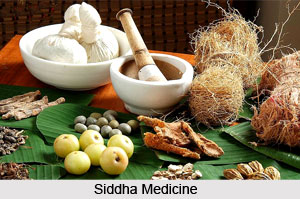Ahara is one of the three significant pillars of Ayurveda. It means that it is one of the basic principles upon which health, happiness and harmony along with the natural law rest. Ahara is concerned with diet and lifestyle and is fundamentally preventive in nature. Ahara is also known as the life-supporting diet is the first and foremost pillar of Ayurveda.
Ayurveda commonly refers to the knowledge of proper diet and it actually provides the first approach that can create and maintain ideal health and to alleviate the symptoms of illness. Ayurveda emphasizes that while diet does not cure well-established diseases but sixty per cent of the illness can be controlled only by adjustments in diet and proper eating habits.
Ahara is defined as a real significant aspect of maintaining good and sound health. Ayurveda says that the eating habits should be conducive to health. So, it is very important to determine a diet that is most appropriate for the particular constitutional type.
 Ayurvedic Nutrition
Ayurvedic Nutrition
Ayurvedic understanding of nutrition is quite different from that of the Western concept. The primary focus of the Western concept of nutrition is on the physical attributes of food, it means the amount of all the nutrients should be in equal proportion. On the other hand, Ahara is concerned with the effects of several types of food on the quality of the mind, balance of the doshas and the digestion. Ayurveda says that the almost all the diseases arise on the physical level from improper and inadequate metabolism system and it generally leads to weak and imbalanced functioning. Ayurveda aptly recognizes the critical role that nutrition plays in the maintenance of mental sattva, which is the key to keeping the parts of life fully associated with their wholeness source.
In Ayurveda, it is mentioned that any food can have its maximum effect if all the five elements or the bhutas are present in proportionate quantity. Ayurveda use taste for determining which elements are in high amount in any particular food item. The basic tastes arise out of the various combinations and permutations of all the five elements. In some cases, certain tastes increase the influence of one dosha compared to the other and decrease the overall effects of the other doshas. Foods are categorized as per the tastes that pacify or decrease certain dosha`s aggravation. So, it is very important to understand the effect of tastes on the doshas, so that they can be kept in a balanced state creating optimum digestion.
In Ayurveda, it is also stated that the three doshas namely Vayu, Agni and Jala should be nourished properly and that can be accomplished by incorporating all the basic tastes in any food item. However, proper balance of tastes differs slightly from one individual to another. Maintenance of a natural equilibrium is very important in order to get the maximum result. A proper balanced diet can correct present imbalances by pacifying the excessive doshas and strengthening the weak ones. It can bring back harmony in nature that is prakruti. There are several ways through which different foods affect both the quality of the mind and the body`s ability to convert those particles into substances capable of nourishing the dhatus.
It is stated in Ayurveda that humankind is a part of nature. In the modern times, the ways in which the food is prepared and presented have changed drastically. As because of the rapid pace of life the trend towards urbanization, one can have less access to fresh food. Today, the dependency on packaged and processed food has also increased tremendously. It definitely has some deleterious effect on both mental and physical health.
From the Ayurvedic perspective, it is very important to determine the proportionate balance of all the nutrients as it helps in finding out whether a food item is healthy or not. The body has great difficulty in metabolizing the synthetic or inorganic substances in any food item. The body produces a toxic residue as a result of the synthetic or inorganic substances that prevents the nutritive substances from reaching the dhatus. Additionally, these harmful chemicals also damage the dhatus themselves. These responses actually strain the entire system and ultimately decrease the capability of the immune systems of the body to perform its functions.
Ayurveda calls the refrigerated foods or those foods which have been left overnight as lifeless food or `paryushit`. It defines that food that has been subjected to cold easily develops those heavy qualities that puts a strain on the digestive system of the body. It further impedes the metabolic process. However, Ayurveda is not against the principle of refrigeration that helps in preserving food. Another point related to chemically preserved food is that it has the added harmful influence of the synthetic chemicals, which was used to retard spoilage. Ayurveda always gives emphasis on fresh foods. Raw foods should not be excluded from the diet completely. They should compose a quarter of the total food intake in a day. Another popular way of preparing food is frying. Oil in the food makes it difficult to digest and heavy. The deep fried foods promote tamas in the mind because of the heaviness arising from the huge amount of oil that was used for cooking.
Ahara and the Gunas
Sattvic Foods - Foods with a sattvic influence on the mind are usually light in terms of digestibility and they easily nourish the body and mind. Sattvic foods include milk, fresh foods, fresh fruits, ghee, grains, whole wheat, almonds and vegetables. These food items produce creativity, clarity, calmness and health in the body.
Rajasic Foods - Foods which amplify rajas in the mind actually increase the activity level and heat in the body. It includes garlic, onion, tomatoes, chillies, eggs, fish, spices, corn and radishes. These food items make the mind restless and emotionally aggressive.
Tamasic Foods - Tamasic food items are those food items that promote heaviness in the body. It includes fermented foods, cheese, mushrooms, alcohol, red meat, deep-fried fermented foods and especially leftovers. These food items not only cause mental dullness but also cause physical lethargy and confusion.
Ayurveda defines that human beings can do a great deal to improve the quality and prolong life by consuming a healthy Ahara and maintaining a good lifestyle. Ayurveda says that when appetite, digestion and elimination are normal the body has abundant energy. So, the concept of Ahara in Ayurveda plays a very significant role.




















